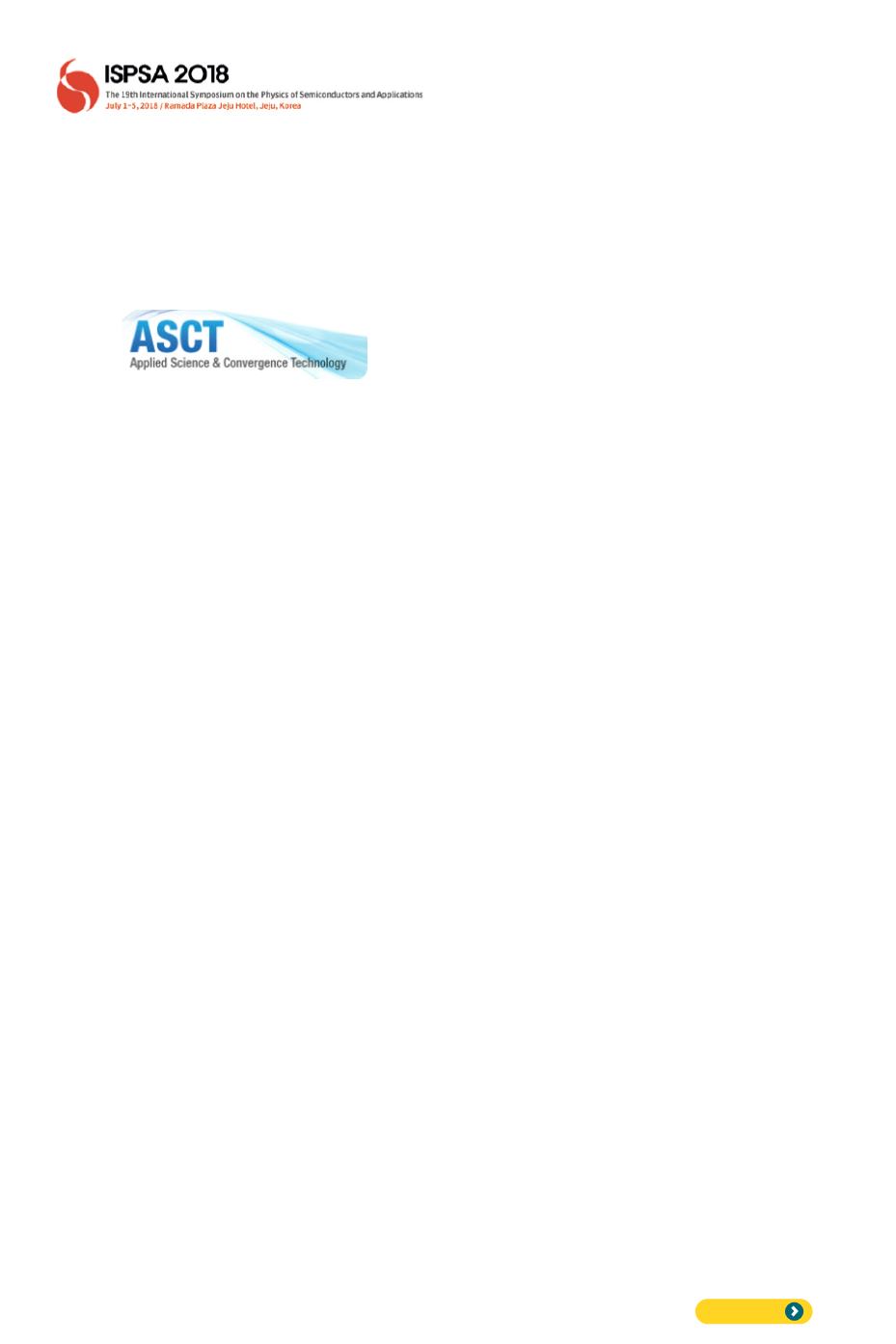

123
org), ISPSA (international symposium on the
physics of semiconductors and Applications,
www.ispsa.or.kr), Quantum Dot Symposium,
etc. One of the most significant events of these
was IVC-20 (international vacuum congress 20,
BEXCO, Busan Korea, 2016,
www.ivc-20.com).
Official publications of the KVS include the ASCT
(Applied Science and Convergence Technology,
full English e-journal,
www.e-asct.org) and the
Vacuum Stories Bulletins(Korean). The ASCT
was listed as the top 10% journal by the Korean
Research Foundation in 2017.
Other activities and services include: an Annual
General Meeting every year; two 3-day Annual
Symposia in winter and summer(450 papers
and 500 registration each); the surveying,
collecting and exchange of information;
supporting international symposia, joint research
and overseas meetings; encouraging Vacuum
Industry-Academy cooperation; recommending
vacuum related policies to government; and
organising the standardization of vacuum
components and products.
At every biannual meetings, short courses on
Vacuum and Plasma are presented. There
are typically 80 attendees each and they are
playing a good role in training new students and
company’s researchers. In addition, an Award is
given to a Young Vacuum Scientist at graduate
school level, who attends and presents a talk
at an IUVSTA, AVS or other Vacuum Meeting
abroad.
Twice a year, a Vacuum Equipment Exhibition is
organised in conjunction with the KVS meeting
in February and July. About 30 to 40 companies
contribute to this. In the year 2000, a Korean
Vacuum Industry Association (KVIA) was created
to promote the Korean Vacuum Industry and to
collaborate with the KVS. In 2016, the industrial
symposium was successfully held in IVC-20 in
BEXCO, Busan Korea. Over 120 companies
joined the exhibition as well as the technical
sessions.
During the period since 1991 when the KVS was
formed, the Korean vacuum industry has grown
by a factor of 5 in scale, products and technology.
Korean semiconductor manufacturing businesses
are leading the global market, especially in
memory products, e.g. DRAM and NAND flash
devices. Same is as good in flat panel display
industries, e.g. LCD and OLED. Many equipment
and vacuum parts companies are growing. This
was done by the Korean government’s support
through a Long-range Vacuum Project under the
supervision of the KVS member institutes, e.g.
KRISS.
Now South Korea is running large scale vacuum
research facilities: a 4
th
generation radiation
accelerator, a synchrotron accelerator(PLS,
Pohang Light Source), heavy ion accelerator
(under progress), the world first superconducting
plasma fusion device (K-STAR) and a space
simulator for the Korean Space Mission Project.
Professor Tong Soo Park, Physics, who served
as foundation president of the KVS from 1991 to
1997 is now an Honorary Life President (age 96 as
of 2018, still extremly healthy and active in book
authoring). He was followed by 10 presidents
and now Professor Eun Kyu Kim, Physics, is the
current president until December 2018. He is
running the society with strong leadership.
The KVS has been collaborating with global
societies (IUVSTA, American Vacuum Society,
Japan Vacuum Association, Taiwanese Vacuum
Society and Chinese Vacuum Society) to hold
many international symposia. As an active
member of IUVSTA, it will extend activities with
them both in membership and in academic
events including publications which would be
surely be a key role in mutual relations among
IUVSTA member societies. The KVS has turned
27
th
year in the history and it will be evolving until
the earth is floating in vacuum.
SUMMARY









